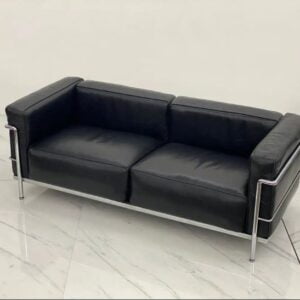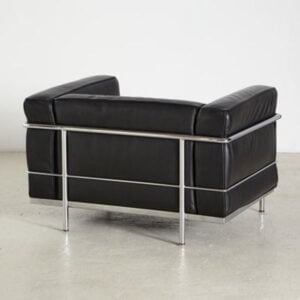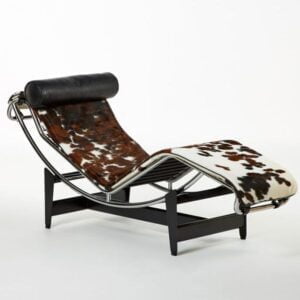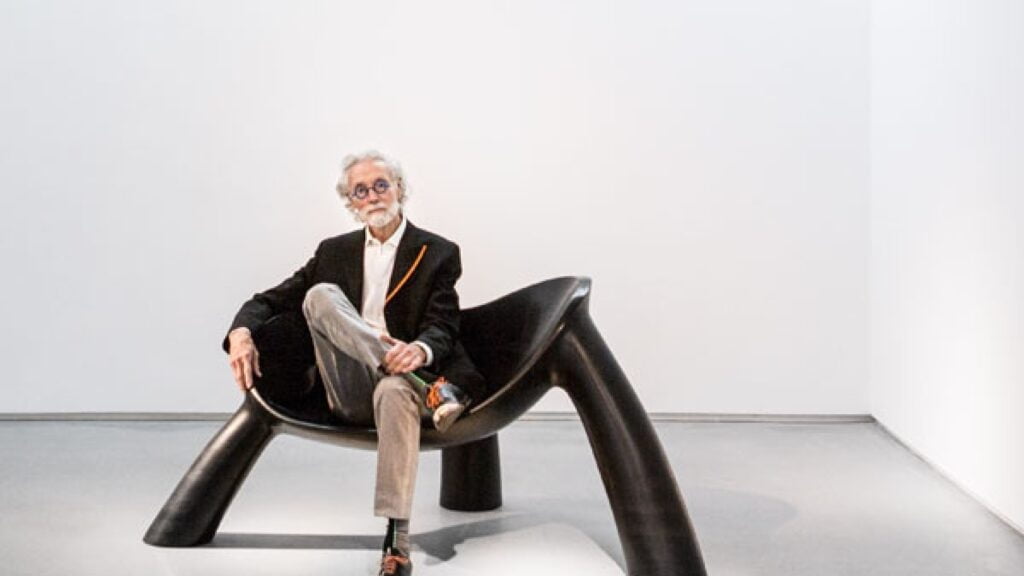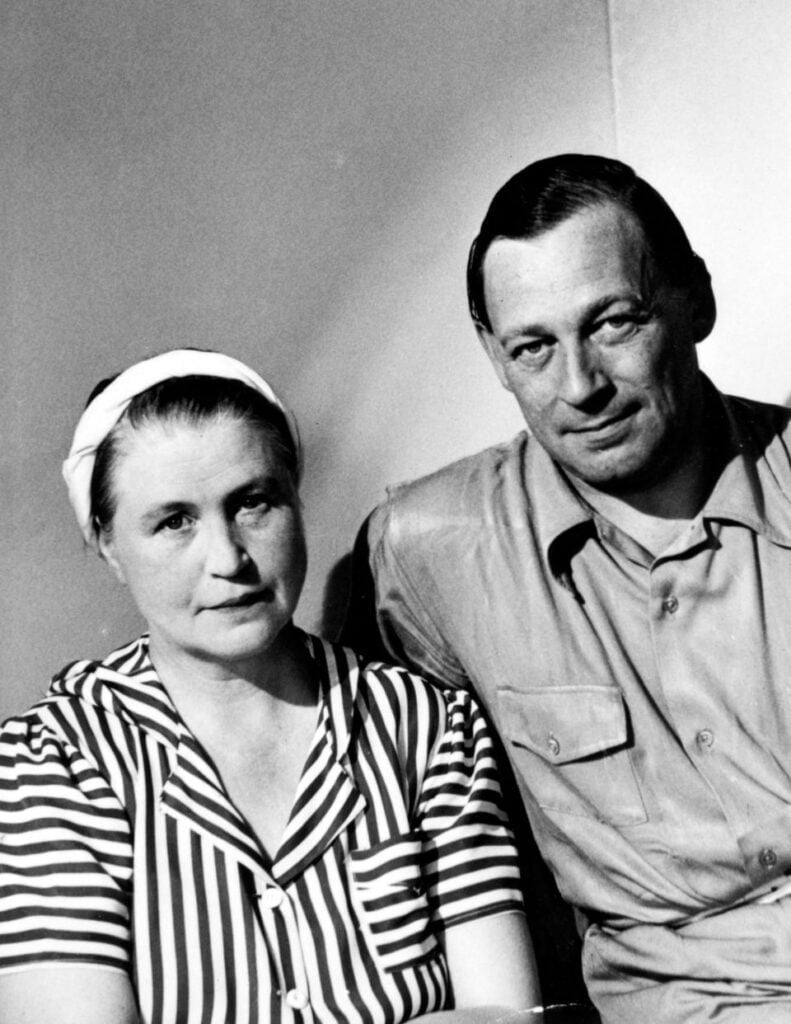Le Corbusier
Le Corbusier
designer
- Birth: October 6, 1887
- Died: August 27, 1965
- Nationality: French
Charles-Édouard Jeanneret, better known as Le Corbusier, was a Swiss-born French architect, designer, writer, and painter. He was one of the most influential figures in 20th-century design and urban planning. He studied architecture in Switzerland, Vienna, and Berlin, and like many thinkers of the early 20th century, Le Corbusier soon became drawn to urbanism.
He understood that better design leads to an overall better quality of life, and his early work was aimed at improving the living conditions of residents of crowded cities.
He addressed urban planning by creating what he called “machines for living“: functional, high-rise residential blocks, which could provide quality homes at a low cost. The Unité d’Habitation in Marseilles, built in 1952, included shops, a gym, and even a rooftop swimming pool. These early housing projects were the blueprints for much of urban planning today. Until the late 1920s, he had been relying on mass-produced furniture to furnish his architectural projects, but after the architect, Charlotte Perriand joined his studio, they started to experiment with creating their own pieces.
LC Chairs, Tables and Sofas
The first of these were steel chairs with chrome plating, which were exhibited in Paris in 1929 as part of his collection for the Salon d’Automne. The most famous of his furniture designs are undoubtedly the elegant chairs, stools, and sofas of the “LC series.
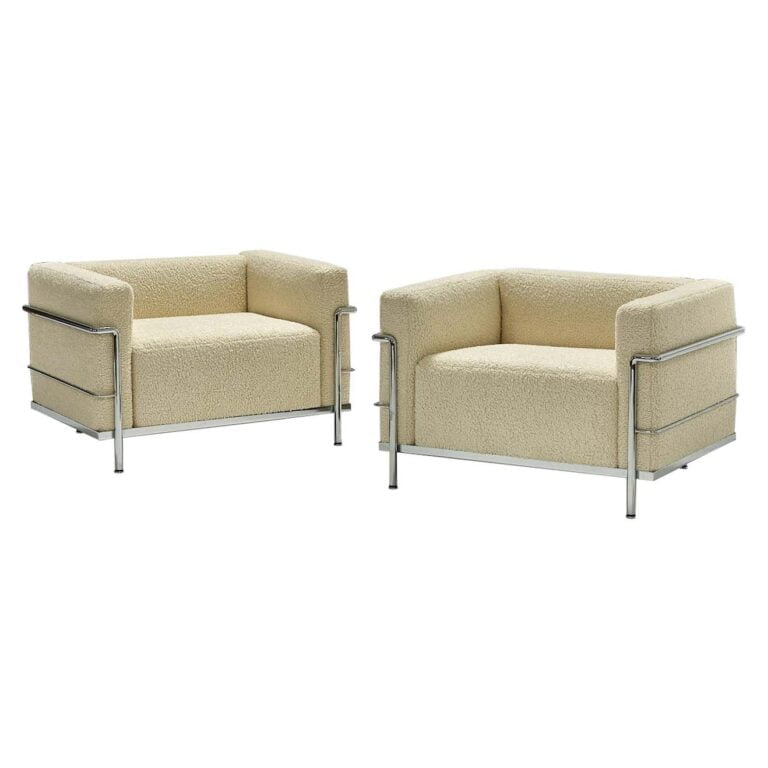
- One of Le Corbusier’s most recognizable designs, the LC-1 Sling chair uses the chrome-plated, tubular steel frame to suspend the seat in mid-air. The seat can be tilted as the sitter shifts positions.
- The LC-4 lounge chair, nicknamed the “relaxing machine,“ floats above its steel frame. Its curves mirror the natural curves of the body, and the simple leather upholstery preserves its clear lines.
- The LC-3 armchair and sofa differ from the LC-2 only in the choice of upholstery. The more compact LC-2 is upholstered in leather, while down cushions give the LC-3 a softer look and feel.
- The LC-14 stool was first designed for a university residence in Paris. Made of chestnut wood instead of le Corbusier’s usual steel, the holes carved into the sides make it easy to move around.
- The LC-3 series was later revised to produce a second, weather-resistant version. The original stainless steel frame remains, but the upholstery is lined with canvas or polyester.
- The LC-2 sofa and armchair were called the “cushion baskets.“ The frame is externalized, but instead of being the focus of the piece, it discreetly braces heavy leather upholstery.
- The glass tabletop of the LC-10-P table is anchored to the ground by wide steel legs, creating a striking visual contrast between the fragile surface and its industrial supports.
- The revolving stool LC-8 was an exploration of the structural possibilities that would be available when using tubular steel. It was designed to mirror the LC7 swivel chair.
- The LC-7 Swivel Chair was designed for the Modern Art Salon in Paris in 1929. The chrome-plated tubular steel frame curves sharply downwards, and the seat above swivels freely.
- The LC-15 Table combines a round, wood tabletop with sharp steel angles in the base, for a play on geometrical forms, as well as materials.
- Charlotte Perriand conceived the Tokyo Chaise-Longue while she was living in Japan. She re-created the LC-4 using bamboo, “giving the “relaxing machine” a new, organic feel”.
Another design which Perriand conceived in Japan, the Ombra Lounge Chair adds a distinctive lacquered finish to the steel frame. The slender frame supports two detachable leather cushions.

